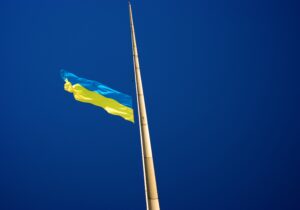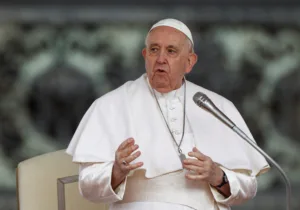Since the outset of Russia’s full-scale invasion of Ukraine, a common mode of analysis has been to contextualize the conflict through the political and social history of both nations, particularly Russia. On one hand, this undoubtedly reflects a defect in our intellectual environment. As historian Tymothy Snyder explains in his series of lectures on Ukraine, the media is prone to discussing the war from Vladimir Putin’s supposed thought processes and “the things we find comfortable, like the psychology of people we don’t know.” Because military history has gone out of fashion, less insight is provided regarding the significance of “logistics,” landscapes, and the nature of “partisan warfare” (ca. 3:10-4:02). On the other hand, there undoubtedly is value in pondering the relationship between a country’s social order and its martial performance to make sense of the cataclysm now unfolding. According to one scholar, the “contention that armies always reflected the nature of the societies that produced them ha[s] been made by military historians and intellectual soldiers as far back as the classical period.” When it came to the French Revolution, Carl von Clausewitz went so far as to deem this aspect “the decisive element of the new style of war” (p.982).
Historian Victor Davis Hanson has discussed at length the advantages of armies composed of free and equal citizens. In one lecture, he argues that “the military dynamism of the West” results in large part from “personal freedom and […] consensual government.” “When societies are free,” he elucidates, “then citizens fight as soldiers with a clear sense of rights and responsibilities.” Dr. Hanson substantiates his thesis by referring to American and Roman soldiers and by juxtaposing Athens and Persia as well as the Spaniards and Aztecs. A classic example of such an army is the military of Revolutionary France. Despite its excesses, the Revolution was unquestionably a cause that inspired a popular following the likes of which Europe had not seen for a long time, perhaps since antiquity. It also gave large segments of the French people the sensation of being participants in their polity’s fate rather than mere subjects of a distant ruler. This enthusiasm was reflected on the battlefield. As von Clausewitz commented, “[in t]he Wars of the French Revolution[…], and especially in the campaigns of [Napoleon], the conduct of War attained [an] unlimited degree of energy” (p.128). Likewise, one of the main points of agreement among military commentators discussing the Russo-Ukrainian War has been the extraordinary energy and initiative manifested by the defenders.
The French situation is obviously comparable to the current Ukrainian one. Here, too, a popular uprising – the Revolution of Dignity in 2014 – marked the beginning of the hostilities, with a foreign power disgruntled by the overthrow of the previous regime acting as the aggressor. Hence the feeling, among the French then and the Ukrainians now, that they are defending not only their country but their hard-won freedom; in both cases, we see a concomitant tide of popular fighting spirit. In 2022, an article in The Economist noted that by March sixth of that year, ten days after the start of the full-scale invasion, “some 100,000 Ukrainians had already chosen to enlist in the territorial defense force, a new branch of the military.” Although some citizens who had fought before were subject to a draft, the report noted: “What is happening now is not full conscription.” Moreover, there was no consensus on the question “whether the popularity of Ukraine’s cause makes conscription unnecessary.”
Some of the strengths of citizen armies are especially present in yeomen armies. Of the American Civil War, for example, Dr. Hanson writes that the South unjustly discounted the fighting prowess of the “industrial, toiling class,” but also that it underestimated the North because it was unaware “that a muscular Northern yeomanry existed.” Agriculture is an integral part of the history and culture of Ukraine, partly because of its uniquely fertile soil. In Ukraine: A History, Orest Subtelny observes:
Stalin had an exceedingly low opinion of peasants, for he considered them […] a major barrier to revolutionary change. [B]ecause Ukrainians were an overwhelmingly peasant people[…], they were doubly vulnerable to his designs. (P.404).
Whether accurate or not, there is a widespread perception in Ukraine that the greater fecundity of Ukrainian soil created a culture of yeoman farmers in centuries past, whereas harsher farming conditions in Russia incentivized serfdom and more collectivist economic models. This is thought to have created a less individualistic and more authoritarian social ethos. Incidentally, analogous logic is found in the histories of Vietnam’s southern and northern regions that Michael Kort outlines in The Vietnam War Reexamined. The point is the perception itself: it indicates that there is a popular self-identification with the freedom-loving yeoman values in Ukraine; this is consistent with observed battlefield performance.
In contrast, the Russian military can be likened to another historical archetype, namely the colonial army. Pierre L. van den Berghe elegantly encapsulates the essence of this kind of fighting force in his classic The Ethnic Phenomenon:
Colonial armies did not need to be the most efficient and technically competent. Basically, colonial troops were made up of quickly trained, cheaply equipped infantrymen whose main skill was an ability to shoot down unarmed civilians and to burn and loot villages…
[C]olonial troops were occasionally used to repress well-organized insurrections[…], and even to fight their masters’ wars on different continents. Their main task, however, was to prevent local populations from rebelling[.] (Pp.98-99.)
A popular perspective in Ukraine is that the war with Russia is an imperial one, and in fact represents the final gasp of the world’s last empire – Russia. Articles in the Ukrainian media attest to this opinion. Notably, Political Science professor Mykola Buchyn writes: “[Russia] is a federation; however, de facto, [it] can be considered the last empire on the planet.” After further analysis, he concludes that this specimen is doomed to collapse just as all the others did.
More evidence than can restated here demonstrates how closely the Russian military’s showing in Ukraine conforms to the above description of colonial armies. The most striking comparison may focus on the Russian National Guard (Rosgvardiya). Like van den Berghe’s “colonial troops,” this organization mainly serves to stamp out rebellion in its own country, but can be transferred to a foreign country, as has been done in Ukraine. Ukraine is also a former colonial subject of Russia, so the National Guard’s role in the war is not deeply different from its usual tasks. In Ukraine’s occupied territories as in Russia, it is mainly intended to keep the populace from revolting. When pitted against the Ukrainian military in battle, it exhibits all the inadequacy of a colonial army.
Other traits of colonial armies reflected in the Russian military are sketched by Benedict Anderson in his otherwise not-very insightful Imagined Communities. They placed great emphasis on spectacle (p.151), which may remind one of ostentatious Russian parades in recent years and the purchases of certain high-end technologies without ensuring the ability to use them. In practice, however, “colonial militaries” were “armed with swords and obsolete industrial weapons” – a further feature mirrored in the current conflict. We can interpret such traits partly as products of the colonial military’s function, which is the suppression of militarily far inferior opponents: colonial populations in former times, smaller states (Georgia, Ukraine in 2014), and sub-state bombing targets (as in Syria) in the case of modern Russia. In order to punch down in this fashion, an army need not be exquisitely armed. More than force of arms, intimidatingly flashy displays are rational as latent discontent among the adversaries who are to be suppressed creates a continuous incentive for deterrence.
In its visceral hostility and aggression towards the locals, the Russian military in Ukraine often has the appearance of a herd of disaffected ruffians compensating for the indignity and disenfranchisement they feel in their own country. This relates to what Anderson has to say about the logic of colonial domination:
[I]f, say, English lords were naturally superior to other Englishmen, no matter: these other Englishmen were no less superior to the subjected natives. Indeed one is tempted to argue that the existence of late colonial empires even served to shore up domestic aristocratic bastions[.] (p.150.)
Anderson was a Marxist of sorts, and we can doubt whether his class-based analysis truly explains colonialism well, but he provides compelling evidence that it is an accurate representation of how many European commoners in the colonies experienced the system.
The aloof monarchies and aristocracies of the colonial era are paralleled by the dictatorial Russian regime. An underappreciated historical commonality is Putin’s use of the same strategy to protect himself against prosecution that was employed by Chile’s Augusto Pinochet. (The point is the typology: Pinochet was indisputably a dictator, even though we may find his politics more palatable than Salvador Allende’s.) We can also note the return, in recent years, of a royalist current of thought into the Russian government’s ideological repertoire. Historian Marlène Laruelle opines:
The reburial of [tsarist] General Anton Denikin and […] [tsarist philosopher] Ivan Il’in […] paved the way for a broader reintegration of the tsarist past[…] into the state’s symbolic apparatus (thanks in large part to the influence of film director Nikita Mikhalkov). (p.638.)
Mikhalkov, a heavyweight monarchist, is also a prominent backer of Putin.
In the historical parallel we have exposed, then, Vladimir Putin plays the role of autocratic monarch, while the Russian military is analogous to the colonial armies of old. Its sub-par performance – when one accounts for numbers and equipment – bears this out.






 Sponsor a student for Christianity & National Security 2024
Sponsor a student for Christianity & National Security 2024